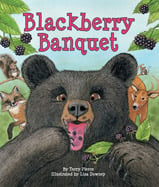Alignment to Standards for NY

| Grade | Number | Standard |
|---|---|---|
| K,1,2,3,4 | K-4..3.1a (iv) | claws, shells, spines, feathers, fur, scales, and color of body covering enable some animals to protect themselves from predators and other environmental conditions, or enable them to obtain food |
| K,1,2,3,4 | K-4..3.2a | Individuals within a species may compete with each other for food, mates, space, water, and shelter in their environment. |
| K,1,2,3,4 | K-4.3.1a | Each animal has different structures that serve different functions in growth, survival, and reproduction. |
| K,1,2,3,4 | K-4.3.1a (i) | wings, legs, or fins enable some animals to seek shelter and escape predators |
| K,1,2,3,4 | K-4.3.1a (iii) | eyes, nose, ears, tongue, and skin of some animals enable the animals to sense their surroundings |
| K,1,2,3,4 | K-4.3.1c | In order to survive in their environment, plants and animals must be adapted to that environment. |
| K,1,2,3,4 | K-4.3.1c (i) | seeds disperse by a plantês own mechanism and/or in a variety of ways that can include wind, water, and animals |
| K,1,2,3,4 | K-4.3.1c (iii) | animal adaptations include coloration for warning or attraction, camouflage, defense mechanisms, movement, hibernation, and migration |
| K,1,2,3,4 | K-4.4.2a (i) | animals convert food to heat and motion |
| K,1,2,3,4 | K-4.4.2b | Food supplies the energy and materials necessary for growth and repair. |
| K,1,2,3,4 | K-4.5.1b | An organismês external physical features can enable it to carry out life functions in its particular environment. |
| K,1,2,3,4 | K-4.5.2b | Animals respond to change in their environment, (e.g., perspiration, heart rate, breathing rate, eye blinking, shivering, and salivating). |
| K,1,2,3,4 | K-4.5.2f | Some animal behaviors are influenced by environmental conditions:nest building, hibernating, hunting, migrating, and communicating. |
| K,1,2,3,4 | K-4.6.1b | All animals depend on plants. Some animals (predators) eat other animals (prey). |
| K,1,2,3,4 | K-4.6.1c | Animals that eat plants for food may in turn become food for other animals. This sequence is called a food chain. |
| K,1,2,3,4 | K-4.6.1e | An organismês pattern of behavior is related to the nature of that organismês environment, including the kinds and numbers of other organisms present, the availability of food and other resources, and the physical characteristics of the environment. |
| K,1,2,3,4 | K-4.6.1f | When the environment changes, some plants and animals survive and reproduce, and others die or move to new locations. |
| K,1,2,3,4 | K-4.6.2b | The Sunês energy is transferred on Earth from plants to animals through the food chain. |
| K,1,2,3,4 | K-4.7.1b | Over time humans have changed their environment by cultivating crops and raising animals, creating shelter, using energy, manufacturing goods, developing means of transportation, changing populations, and carrying out other activities. |
| K,1,2,3,4 | K-4.7.1c | Humans, as individuals or communities, change environments in ways that can be either helpful or harmful for themselves and other organisms. |